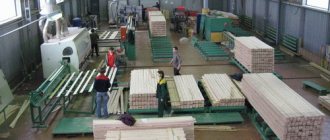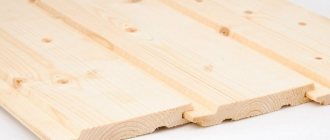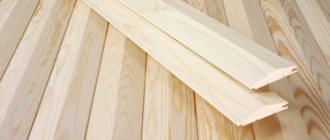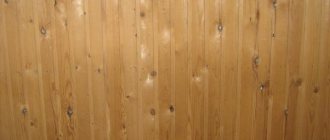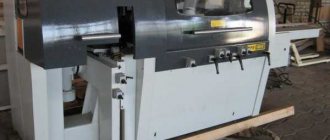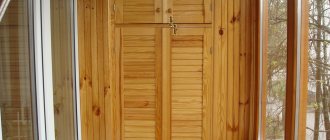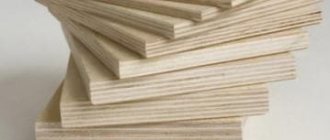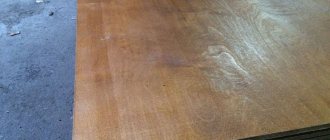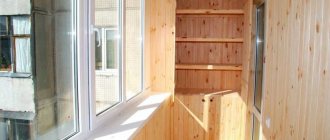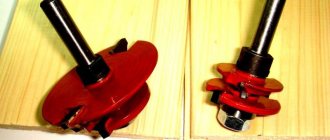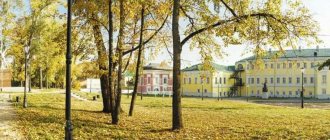Our clients are often interested in what is the difference between Shtil lining and Euro lining. In this article, we will consider the characteristic features of each material, as well as the specifics of application. Lining is a thin cladding board that is used for interior decoration. This type of material is in demand due to its aesthetic appearance, as well as the ability to create a comfortable interior.
The surfaces obtained as a result of installing the lining can be corrugated or smooth. To achieve such effects, they resort to the use of various types of lumber. Quite often our clients make a choice in favor of eurolining, but the “Calm” profile is no less in demand.
What is the difference between the Shtil eurolining and the regular one?
- Short review
- Varieties
- Lining made of plastic
- MDF products
- Wood lining Standard
- Calm
- Eurolining
- American
- Materials for production
For a long time, such a beautiful natural material as wood has been used in the construction and decoration of various premises. It has a long service life, wonderful texture, is easy to process, and always creates coziness and a pleasant feeling of warmth and comfort in any room. Of course, the price of such a product is considerable, so not everyone can afford to purchase it. Various panels made of eurolining will help solve the problem of interior design.
Beautiful examples
Eurolining is often used in cladding loggias. Such panels in this case are quite traditional and perform their functions well.
Finishing with “Calm” clapboard can create comfort in any room.
To learn about the differences between Euro lining and Shtil lining, see the following video.
Short review
What is lining? Initially, these are thin wooden cladding boards of a certain size. They are connected to each other using grooves and tenons. They can be used for finishing the external and internal surfaces of living rooms, baths, saunas, balconies and other premises.
The name is associated with the process of development of railway communication. In passenger cars, the interior lining was made of wooden planks. This made trips more comfortable, because wood, by its natural properties, resists heat and cold, dryness and humidity better than other materials.
Now lining is a thin profiled board, although not always made of wood.
Varieties
The material from which the lining is made determines the main types of this facing material:
- wooden;
- plastic;
- MDF (made from fibreboard).
Lining made of plastic
Plastic lining is made from polyvinyl chloride. It is hollow inside, which increases sound insulation and better retains heat in the room.
The advantages of such panels include:
- long service life;
- resistance to dampness, which allows them to be used in bathrooms, washrooms, and laundry rooms;
- not afraid of high and low temperatures;
- does not fade in the sun;
- wide choice of colors and textures;
- no additional processing required before installation;
- affordable prices.
As a disadvantage, low mechanical strength is noted: it does not withstand impacts, scratches, or chips.
MDF products
The lining made from MDF stands on the same level as plastic and wooden panels. This material is considered environmentally friendly because it is made from small wood shavings. The production process involves hot pressing wood waste under high pressure. There is no evaporation of epoxy resin or phenol, which allows the use of such cladding in residential premises.
The advantages of MDF lining include:
- light weight;
- simple installation technology;
- large selection of exterior design options.
Wood paneling
It is difficult to imagine life without wooden products. The construction and decoration of various buildings is also not complete without such material.
Wood lining is produced with different parameters, which is why the names are different. The main difference is the profile shape. Let's look at some of them.
Standard
This is a basic type of lining, which in cross-section has the shape of a trapezoid. Its sides are cut at an angle of thirty degrees. The plane adjacent to the wall has grooves for ventilation, and the edges are made in the form of connecting tenons and grooves. All parts are made taking into account the expansion of wood with increasing environmental humidity. The finished surface looks like a continuous coating with parallel recesses at the joints of individual planks.
Calm
A distinctive feature of this profile is the rounding of the corners of the front parts of the trapezoid visible after assembly. Often this design of planes looks very harmonious in combination with other details of the decor.
Eurolining
A common type of panels, manufactured in accordance with Western European standards. When assembled, it has a wide groove at the joints of individual planks, so the pattern is more prominent. The requirements for the manufacture of lining are quite high. Standards for humidity of workpieces, dimensional accuracy of finished products, and cleanliness of surface treatment are observed.
Each slat at the back has slots along its entire length for ventilation and removal of excess moisture, so that mold and rot do not appear on the wall, sheathing and insulation, and also so that the surface does not warp when temperature and air humidity change.
American
Very well suited for finishing external surfaces. After installing the lining, it seems that these are just horizontal boards overlapping each other. But due to the fact that everything is connected using grooves and tenons, the surface turns out to be almost monolithic, which protects the building well from the influence of atmospheric factors and looks beautiful. These are the main differences between the material.
No. 8. Which manufacturers can you trust?
Of course, the name and reputation of the manufacturer plays a significant role in the choice. Large companies will not risk their name and produce low-quality products. It is worth noting that today there are a lot of domestic companies on the market that produce lining of excellent quality. Imported products are present, but only in small quantities, so we will not divide manufacturers into foreign and domestic, but will give a general list of the best.
"Astar"
A domestic company operating since 2004. To produce various wood products, we use European equipment, which, together with the professionalism of our employees, allows us to produce products that meet European standards. The company's product range includes eurolining of different grades and with different parameters - from extra class to class C, with lengths from 1.8 to 3.6 m.
"Vyatka Pine"
Completely waste-free production, founded in 1999. Equipped with Italian and German equipment, it has repeatedly received prestigious awards. The assortment here is constantly increasing, and the production of lining plays a key role. It is made from pine wood, and the manufacturer offers lining with different types of profiles and parameters.
Materials for production
Pine and spruce are suitable for decorating living spaces, loggias, and verandas. Wood impregnated with resin repels moisture well, so it will last a long time and reliably. But it is not recommended to use it in a sauna because the high temperature produces hot and sticky drops with a pungent pine smell.
Larch has good strength and moisture-resistant qualities. It can be used in rooms with high temperatures, such as baths or saunas.
Linden and aspen have a pleasant and healing aroma, so living in a room with such panels is a pleasure.
Alder can be used to line the interior of a sauna. It can withstand temperatures up to one hundred and twenty degrees with a humidity of one hundred percent.
Also suitable for cladding rooms without heating, such as a dacha, attic, terrace, balcony and the like.
Angara pine, cedar and other types of valuable wood have an inimitable pattern and color, but the cost of such panels is quite high. They can be used to decorate individual parts of rooms, harmoniously complementing the main cladding.
Thus, lining is one of many universal building materials that is used to decorate residential and auxiliary premises both inside and outside. A wide selection of products makes it possible to choose for yourself exactly what will harmoniously fit into the interior of any building.
From the following video you will learn how to choose the right lining.
Not wood covering
If you don’t like wood and prefer other finishing materials, tiles, fiber cement and plastic are at your service. It is no secret that this material is cheaper, and some are even safe.
Plastic panels are only suitable in the rest room and locker room - this material cannot be used at high temperatures. Ceramic tiles and fiber cement have proven themselves better - they are durable and reliable materials.
Fiber cement boards and plastic panels
Fiber cement board for finishing a washing room in a bathhouse is a suitable material, which is a mixture of sand, cement and cellulose.
Density depends on the amount of air and water added. Medium-density slabs are intended for finishing houses and baths - the material does not break and has been serving for a long time for more than a hundred years.
Thanks to the presence of cement, the slabs are waterproof and heat-saving. The presence of minerals adds plasticity. Let's look at the main advantages of fiber cement boards.
- Completely environmentally friendly material without harmful substances;
- Good moisture resistance - there are bubbles inside the slabs that push water out;
- Fire resistance - the material is not subject to fire and can contain a fire;
- Strength and longevity - the service life of fiber cement boards is from 30 to 60 years. The material proved to be better than wood and plastic;
- Easy installation and reasonable price.
As for plastic panels as a material for finishing a bathhouse, the situation here is the opposite: like any brainchild of the oil industry, plastic finishing is completely unsuitable for bathhouses and other similar places. The material is prone to ignition and is filled with toxic substances.
The only suitable place for plastic panels is the locker room, that is, the least hot place where a person spends the least amount of time. Plastic, even at low temperatures, releases toxic elements into the atmosphere, which is felt in the form of an unpleasant odor. However, from a cost point of view, this is the cheapest option for finishing the premises.
Parameters of “Calm” lining and eurolining
The choice of lining for finishing work is a responsible undertaking, where the profile that will create the structure of the surfaces is important. For the production of interior decoration, lining with the “Shtil” profile or eurolining is most often used. Both materials have similar processing features, but there are also differences in application.
During the production process, lining with Shtil and Euro profiles has a number of features that are reflected in the use of these finishing materials.
- Eurolining: The parameters of Eurolining are determined by the DIN 68126/86 standard. This standard regulates the quality of surface treatment of eurolining, according to which the connecting elements of this material must be free of defects and ensure reliable mating. The eurolining is connected to each other using a tongue-and-groove system, which is more reliable and prevents the appearance of cracks when the volume of wood changes under the influence of moisture and temperature.
- To protect the eurolining from moisture, there are two fairly deep longitudinal grooves on its inner side. These grooves, in addition to removing moisture, prevent the formation of condensation and serve to ventilate the inner surface of the lining.
- The longitudinal grooves also carry a structural load - they relieve the internal tension of the wood, which can arise when the wood swells/dries out.
- The quality of surface treatment and the selection of material for the manufacture of eurolining also has a number of features - the presence of wood defects determines the type of lining and its application.
- “Calm” When processed, the “Calm” lining receives rounded edges of the profile, which allows you to create a surface with virtually no transitions from one board to another.
- A sufficiently deep groove-tenon connection allows you to reliably connect individual fragments of the lining to each other.
- To protect the inside of the Calm lining, two longitudinal grooves are selected. These grooves are not as deep, unlike eurolining. However, when used in rooms without excessive humidity and temperature changes, the longitudinal grooves of the Shtil lining cope with the task of relieving internal stress.
Due to the design features of Eurolining and Shtil lining, the orientation of these materials is allowed both vertically and horizontally.
Application of Shtil lining and eurolining
The area of application of lining of both profiles is determined by the design features of the material and the type of wood.
So, lining made of aspen and linden will be the optimal solution for baths and saunas, especially steam rooms. Moreover, eurolining is preferable for walls in a vertical orientation, and “Calm” lining will be the best option for shelves and shelving. Coniferous lining "Calm" can be used in a bathhouse or sauna to decorate rest rooms and other rooms where high humidity and temperature changes are not provided.
Pine and spruce lining, when oriented vertically, will visually increase the height of the ceilings, and when positioned horizontally, it will create coziness. Moreover, the width of the Shtil lining and eurolining directly depends on the area of the room - the smaller it is, the narrower the profile of the lining. To finish ceilings you also need a narrow profile.
When finishing the premises, it is worth considering that the “Euro” lining, during installation, has a small “shelf” at the junction of individual elements. The “Calm” lining will allow you to create a surface that will have virtually no transitions from one board to another.
The difference in the use of eurolining and the Shtil profile
The difference in the use of each lining profile is explained by their design features.
Eurolining, thanks to longitudinal grooves that remove moisture, can be used for both external and internal decoration. Moreover, for the exterior decoration of house facades and balconies, it is better to use lining made from coniferous trees. When used in this way, the eurolining must have a strictly horizontal orientation.
The Shtil lining can be used for interior finishing work with virtually no restrictions. At the same time, both types of profiles “Euro” and “Calm” require additional antiseptic and fire protection treatment. Painting, varnish and other protective compounds are allowed. The choice of lining profile for external and external finishing depends on the financial capabilities and preferences of a particular consumer and the design solution of the room or facade.
Scope of application
Spruce wood is used on balconies, but only after special impregnation. The point is low resistance to water, high temperatures and attacks by harmful insects. Larch is used both inside and outside the house and is highly valued due to its practical qualities. Products made from ash and oak are recommended for living rooms with little humidity; they look beautiful and last a long time. To use eurolining for interior walls, the material is carefully prepared, preventing rotting and swelling.
Contrary to popular belief, European lining is suitable not only for utility rooms. Modern designers and developers have managed to refute this assessment. Wooden blocks are perfectly combined with tiles, various wallpapers, plaster and so on. Eurolining can be used on walls and ceilings to the same extent. But in the second case, the laid canvas should be arranged as tightly as possible.
Many people are interested in whether it is necessary to specially treat eurolining boards before laying them on the ceiling. There is no special need for this; you just need to dry the material at room temperature for at least 14 days. It is highly undesirable to speed up this process at home. Larch is not suitable for a bathhouse, where it will very soon take on an unpresentable appearance
Coniferous wood is also bad there, especially in the steam room, since careless touching can cause a burn
Alder, due to its increased concentration of tannins, is excellent for finishing a steam room. Such wood absorbs water abundantly and transmits little heat. Birch has a bright texture, but does not tolerate high humidity. But it will be very useful in dressing rooms or rest rooms, subject to antiseptic treatment. Please note: lining fastenings in damp rooms, unlike in an ordinary room, must also be protected from moisture.
Eurolining is even better than the usual variety in bathhouses, because it is equipped with a deep groove and tongue joint and has an enlarged tenon. Water removal occurs more actively. The surface hidden behind a layer of material is better ventilated. When laid vertically, an increase in the tolerable temperature is achieved by reducing the resource. Basically, this method is suitable for steam rooms with dry air and saunas.
The lining is calm. What is this
To understand what it is, it’s worth remembering what lining actually is. This definition means a board made of wood, which is equipped with a special lock for secure fixation. A lock is the presence of a groove (small depression) on one part of the board and a ridge on the second. Due to this structure, finishing panels can be easily laid and reliably connected to each other. At the same time, the lining comes in different types, including calm and eurolining. They all differ in the type of lock, which will affect the performance properties.
What is the difference between Shtil lining and Euro lining?
What is “calm”? This finishing material is well known under other names, for example, “Collective Farm Woman”, “Peasant Woman” and “Russian Lining”. It will differ from the European version in different characteristics.
- Profile - the front from the tenon to the wide part of the eurolining has sharp linings. The style is equipped with curves and transitions. At first, this difference may seem minimal, but in reality absolutely everything will matter. Due to the rounded corners, the surface with this finish will appear smoother and even “softer”. Moreover, calm has a more attractive price. This is due to the fact that rounded surfaces are easier to process, and there will be practically no chips or cracks. A small percentage of waste in production makes it possible to significantly reduce the price of finished products.
- Dimensions of tenons - a feature of eurolining is that the dimensions of the tenon are much larger than the groove. Due to this property, during lamellar assembly, differences in the thickness of the decorative coating, that is, the “shelf,” appear. This will make the already finished surfaces look like a fence, rather than a smooth base. In calm conditions, the dimensions of the groove and tenon are made the same. This makes it possible to achieve evenness of the coating with the same thickness over the total finishing area.
Now let's look at where you can use calm.
Application area
Shtil, unlike eurolining, has a wider area of use. It can be used when cladding not just vertical, but also horizontal surfaces, for example, the same ceiling. Professional finishers and builders strongly advise using lining of the “calm” variety when finishing baths, loggias, balconies, ceilings and walls (from the outside and inside).
Dimensions
In addition to the features of the lock, the calm also has another feature - different lamella widths. Depending on the characteristics and requirements of the work, the buyer will be able to choose boards with a width from 9 to 14 cm. This is quite convenient, and even more so considering the fact that eurolining does not provide such a choice. What will this characteristic influence, and which option should I choose? Large-width lamellas cover a larger area, which means they increase the speed of finishing work. This option is ideal when deadlines are tight:
- Narrow slats - ideal for interior walls.
- Wide lamellas - this material should be used for exterior decoration of balconies and walls.
Most buyers are interested in what specific direction the boards should be laid (vertically or horizontally). In reality, there are no strict requirements for installation, and the only thing that is important to consider is that the vertical placement of the strips makes it possible to visually raise the ceiling in the room and expand the space, and therefore we recommend it for relatively small rooms. But the horizontal placement of boards looks great in spacious rooms.
Advantages
Calm lining in the interior has a huge number of advantages. This makes it possible to achieve a perfectly flat surface without differences, suitable for interior and exterior decoration, and also increases the speed of finishing work (applies to wide lamellas). Moreover, they have a lower cost.
Useful tips for the master
It is best to cut lamellas with a hand-held circular saw at high speed. This tool allows you to make an even cut without the risk of chips, cracks, or the blade moving to the side.
Treatment of wood with antiseptics, waterproofing agents and other protective agents occurs only after preliminary cutting and fitting of the lamellas.
Many manufacturers coat their products with protective compounds before sale. This does not mean that you won’t have to apply an antiseptic to the slats - protection against moisture in a warehouse is noticeably different from antifungal protection in an apartment.
It is necessary to carefully select fastening material. Cleaver staples also differ in their characteristics. It is worth choosing wide brackets made of galvanized iron with 2-4 holes for self-tapping screws. High-quality fastening - durable coating.
Calm lining in the interior of any room is a noticeable plus for the atmosphere. Timely care and replacement of defective sheets will extend the life of the repair in the room.
Wagon selection
Softwood paneling
The following coniferous trees are often used to create lining boards: cedar, aspen and spruce.
This tree differs from deciduous trees in different properties.
- Resin content – pine and spruce wood has a high resin content, because it is these substances that will act as natural antiseptics that prevent the formation of mold and mildew. Pine wood lining will be the best solution for finishing the outside walls of a house.
- Low thermal conductivity - despite this feature, it is better not to use coniferous slats for finishing saunas and baths. The thing is that when heated, coniferous lining releases a lot of resin, which negatively affects human well-being.
- Strength – pine boasts an extremely high rating, and moreover, elements made from such wood can be easily processed. Working with her is a complete pleasure.
Calm cedar lining is considered one of the highest quality and most expensive options. In addition to its high level of strength, it has healing properties.
Hardwood paneling
Hardwood does not contain resins, and therefore it should be chosen for finishing the walls inside the room.
Moreover, the range here is much larger than among coniferous wood.
- Linden and alder - a feature of these options is their high porosity. The fact is that these boards hardly heat up, and therefore can withstand high temperatures without any problems. This is the best option for a steam room.
- Birch - this type of wood is afraid of high levels of humidity, and therefore this lining is perfect only for dry and well-ventilated rooms.
- Oak - it should be purchased if you need a strong, high-quality and at the same time extremely durable cladding.
- Larch – stands out for its chic pattern. Calm larch lining is highly durable and also resistant to high levels of humidity.
Now let’s classify the lining.
Classification
When selecting materials for finishing, you should keep in mind that all lining differs not just in the type of wood, but also in the grade (quality of the material).
- Premium (extra) class - lining made of larch, aspen, cedar and other wood is the most expensive material in comparison with other categories. Such boards are perfectly flat, free of chips, smooth, and free of cracks and other defects. This finish is ideal for expensive interiors.
- And the class - it should be admitted that at an affordable price, boards of this class can be no worse than “extra”. When purchasing, you should pay attention to the external parameters of the products, and the core can only be 20% of the board area; non-through cracks with a depth of several mm are acceptable. There should be no falling out or black knots.
- In class - this material has visual flaws, these are resin pockets and black knots. The presence of slight blue stain and rot is allowed (up to 10% of the total area). There are no more than 3 cracks, dents and small chips per linear meter.
- C class - this finishing material is much cheaper than others, but its quality is not the best. Some manufacturers sell defective boards under the guise of C class. In any case, this is a material with a huge number of through cracks, knots, dark cores and falling out knots.
Now that we have figured out what it is, you probably understand that such a finishing material is ideal for finishing external and internal wall surfaces. It is visually beautiful, completely natural and durable. But to get the best result, you should take your choice as seriously as possible.
The difference between Shtil lining and Euro lining
Lining is a thin cladding board that is used for interior decoration. This type of material is in demand due to its aesthetic appearance, as well as the ability to create a comfortable interior.
The surfaces obtained as a result of installing the lining can be corrugated or smooth. To achieve such effects, they resort to the use of various types of lumber. Quite often our clients make a choice in favor of eurolining, but the “Calm” profile is no less in demand.
Features of materials
Lining is a processed board that has profiled grooves that simplify installation. In the production process of products of this type, manufacturers use various types of wood as raw materials. But this is not the only characteristic that needs to be taken into account when choosing. In addition to the type of wood used during manufacturing (oak, larch, etc.). The profile must also be taken into account.
Eurolining is a widely used profile. Manufactured in accordance with the current DIN 68126 standard. Each board is equipped with a tongue and groove located at different ends.
The Europrofile has a deep tongue-and-groove connection, so after installation is completed, gaps with tenons - shelves - are visible on the surface. This type of connection perfectly compensates for possible deformations of the structure as a result of changes in thermal conditions or fluctuations in the humidity level in the room.
“Calm” lining is a panel that is used to create perfectly smooth surfaces. This type of cladding looks aesthetically attractive and is therefore suitable for premises of any purpose. This effect is achieved thanks to the design of the outer side of the panel. Its edges are slightly rounded with a chamfer, and there is no shelf.
It is worth noting that along the entire length of the “Calm” profile there is an additional groove that provides ventilation. This solution allows you to remove condensation from the wood and prevents the accumulation of moisture on the surface. As a result, performance characteristics are significantly improved.
Common questions and answers
Q: How to quickly and easily remove and move the lining to a new location?
A: Start sorting from left to right, numbering the sheets on the reverse side. It is better to transport the lining in a closed truck on a good road; for additional safety, you can line the layers of the lining with rags or industrial foam rubber. Assembly occurs in reverse order: from the last number to the first. This way you can achieve a perfect fit of the lamellas and an acceptable appearance.
Q: What is the best way to install the lining: horizontally or vertically?
A: There is not much difference for living rooms. For rooms with high levels of humidity or access to water, it is better to mount them vertically.
Q: For which rooms is the Shtil lining not suitable at all?
A: Calm lining looks good in the interior of any room. But there is no point in sheathing office premises, garages, and rooms with direct access to fire (boiler room, room with a fireplace) with brand new material.
Q: Is it possible to put insulation under the “calm”?
A: All types of insulation can be installed on the wall under a layer of lining. Sound insulation, thermal insulation, waterproofing, even electric heating can be installed under this type of finish.
Q: What is the best way to use lining when creating a room design?
What is the difference between Eurolining and Shtil lining?
Eurolining has two characteristic differences in size from the Shtil profile.
First of all, you should pay attention to the tenons, which are longer than those of the Shtil lining. As for the width of the panels, it varies. Euro lining has a width of 96 mm and a length ranging from 1.2 to 4 meters. Sometimes manufacturers produce boards 6 meters long. The thickness of the board is about 14 mm. The length of the spike is from 8 to 9 mm. It should be noted that for ordinary lining the length of the tenon does not exceed 4 mm.
The Shtil lining has a width from 90 to 140 mm. The length of the spike is 4-5 mm. The thickness of the boards can be 12, 14 and 20 mm. Other dimensional characteristics do not differ from eurolining.
These features affect the connection of the parts, so the appearance of the cladding made of these materials will differ. When using Shtil lining, a smooth and even surface is created. If eurolining is used, then shelves are obtained.
Specifics of wood species
Wooden building elements are made from coniferous and deciduous wood. Moreover, hardwood accounts for only 10-15% of the total volume of wooden parts. Coniferous species - spruce, pine, larch, fir, cedar - have higher strength characteristics, and load-bearing structural elements - piles, pillars, supports, frames - are made from them. Sawn coniferous trunks are used in internal and external cladding, carpentry, and shaped structures.
Deciduous wood is used as an auxiliary material when creating low-critical structures - temporary warehouses, sheds, formwork for concrete work, etc.
Table. Approximate prices for false beams from different types of wood
| Wood type | Thickness, mm | Approximate prices for 1 m2 of finished surface as of June 2020. |
| Pine or spruce | 16, 22 | 250-450 rub. |
| 28, 35 | 370-800 rub. | |
| Larch | 20 | 400-1500 rub. |
| Cedar | 12, 16 | 800-1400 rub. |
| 18, 20 | 900-1800 rub. | |
| Linden | 12, 15 | 300-800 rub. |
| 18, 20 | 1100—1900 . |
Dimensions
A standard beam has dimensions from 80 to 280 mm in width and from 80 to 270 mm in thickness with a length of up to 6 m. The width of the false beam is usually in the range from 90 to 200 mm, thickness from 16 to 45 mm, length from 1 m up to 6 m.
Manufacturing companies
from the Arkhangelsk region has its own woodworking production. By optimizing business processes, it sells quality goods without trade markups. A large assortment with different characteristics is always available in warehouses. The company delivers products to Moscow and the region using its own transport within the agreed time frame.
Uralskaya (CvetWood) has been operating since 2009. The company's factories produce imitation timber, calm and eurolining, straight and beveled planks, and fence boards. Pine is supplied from the Sverdlovsk region, larch from Angarsk. Painting is carried out in the factory on an Italian spraying machine. Another machine rubs paint into the wood fibers. A tongue and groove is produced on four sides of the board, which increases the ease of installation. We offer a board with a neat bevel cut.
harvests pine and larch wood in the Vologda and Arkhangelsk regions. The technological processing process is carried out on German and Japanese equipment. Our own vehicles deliver products to Moscow and the Moscow region.
In Russia there are still many companies producing imitation timber.
Advantages of this material
Eurolining has grooves on the back. Thanks to this design feature, it is possible to minimize the risk of parts bending when operating conditions change. If the thermal or humidity conditions in the room change, then nothing will happen to the finishing and the appearance will remain unchanged. The flange connection allows you to compensate for structural deformations.
When using “Calm” lining, the result is a surface that has soft transitions at the joints. This option looks more modern compared to the classic one (with shelves). This creates the appearance of a single canvas, which is not afraid of moisture and is not prone to rotting.
Our assortment includes all popular types of materials. Our customers have a choice of eurolining and Shtil lining made of larch, Angarsk pine, as well as linden and cedar. We offer products of all popular varieties: Extra, Prima, A, B. We deliver orders throughout Moscow and the region.
The difference between lining and eurolining - briefly about the main thing
Finishing facades with wooden lining, covering the ceilings of a room, cladding walls in a house and loggia - all this requires a competent approach and knowledge of the characteristics of lumber. So, in this article we will look at how the calm profile differs from the eurolining.
- What is a Shtil lining profile?
- Pros and cons of the profile:
- How much does the lining cost?
- What is eurolining?
- Pros and cons of the “euro” profile.
- What is the price of eurolining on the market?
- Methods for installing wooden panels.
What is a Shtil lining profile?
Shtil lining is a planed panel with a semicircular (unlike imitation timber, which has an oblique chamfer) chamfer, which can be quite deep and decorative, or can be almost invisible, depending on the thickness of the wood or the cutter used by the manufacturer. The size here can vary from 90 mm to 145 mm; we do not recommend using a larger width, because the board can be bent like a boat. 145 mm width, with a thickness of 13-20 mm, is the optimal size of the stem; if the width is greater, then the thickness should be 26-28 mm.
Pros and cons of the profile:
The advantages of using calm lining on the ceiling and walls indoors:
- creates the appearance of a flat surface;
- the joints look natural and decorative.
The disadvantage of such a material as calm lining is that there are certain requirements for its operation:
- stable indoor humidity;
- treatment with protective compounds;
- external cladding must be made of panels with a thickness of at least 20 mm.
More and more people are choosing this profile because... it is more modern and far from creating the image of a Soviet dacha. There is no need to be afraid of the disadvantages; with modern paints and varnishes, wood protection is at the highest level.
» > Photo 1. Calm lining
How much does the lining cost?
The price of the lining will depend not on the profile, but on the type of wood, grade and quality of the material.
What is eurolining?
Again, EURO is just a profile. The production of which takes place on the same machine and from the same wood as the stil, but using a different cutter. Distinctive feature of eurolining
– a compensation shelf at the junction of panels, the function of which is to compensate for changes in the geometry of the board due to excess moisture or dryness. The dimensions of this panel are usually standard 90 mm width, 12.5 mm thickness, European standard. But it happens that the manufacturer makes it wider and thicker, depending on the needs of the market.
» > Photo 2. Eurolining larch
Pros and cons of the “euro” profile.
The advantage here will be a unique design, which:
- installation can be carried out in rooms with unstable heating, as well as in houses where heating has yet to be connected;
- if he moves the board, it will not be visible visually;
- with a thickness of 14-20 mm, installation can also be done on the facade, or hemming of roof overhangs.
The disadvantage of Eurolining products is that the profile is not in trend today:
- very often Europrofile was used in the Soviet Union when decorating country houses and was so popular that it still evokes corresponding associations among consumers, which makes the product less popular than the same lining, but without a shelf;
- sizes over 96 mm are difficult to obtain.
» > Photo 3. Eurolining Angarsk pine
What is the price of eurolining on the market?
The cost of the material also depends on the type of wood; ordinary pine is a fairly budget option, but cedar, Angara pine and larch will cost much more. Again, the grade of the product will play a big role; the higher it is, the more expensive it will be.
» > Photo 4. Calm larch lining
The LesoBirzha online store will help you not only with the selection of materials for finishing, but will also help you give the correct definition. On the pages of our website you will find answers to many questions about construction and repair, learn the difference between calm lining and euro lining, planken and imitation timber, and receive a lot of professional advice on wood processing and its behavior in operation.
Methods for installing wooden panels.
At the end of our article, I would like to talk about how to install this lumber. Wooden blocks (joists) are used for the sheathing (base). For internal work this section is 40x20 or 30x40, for external work it is 50/40 or 50x50, for counter. For battens (when you need to press down a wind barrier or vapor barrier) we use a 50x20 block.
» > Photo 5. Calm lining
To fasten the lining and eurolining, you can use a galvanized plate - a clamp, the number of which depends on the thickness of the rear groove. For example, with number 4 the groove will be 4 mm. Using a clamp, you can quickly and easily make hidden fasteners. Do not forget that for thick and heavy panels it is necessary to use a reinforced version of the fastener, otherwise it will not hold up.
The second method is to fasten it with self-tapping screws into the face of the board. The store's line includes screws with decorative heads that will look pretty nice on the ceiling and walls. It is important to use anti-corrosion wood screws for façades and areas with high humidity. Another fastening option is a self-tapping screw
screwed into the tenon or groove of the product and overlapped with the next board, which creates a fastener invisible to the eye. It is important to choose the right size here.
So, now we are well versed in the differences between lumber profiles, all that remains is to make a choice according to your budget and taste. All the best.
Installation of VSh
The lining is installed vertically or horizontally. Both installation options are used for interior work. When covering facades, the profile is installed horizontally. Before finishing the fences with clapboards, a support base is prepared for the wooden panels.
Timber sheathing is attached to the walls and ceiling. For this, lumber with a cross section of 30x30 mm, 30x40 mm and 40x40 mm is used. Larger cross-sections of slats are used for significant volumes of work on one plane. The timber is tied with mounting metal corners. The corners are attached to the walls and ceiling with dowels, and to the beams with screws.
The junctions of the cladding with the floor and ceiling are covered with plastic or wooden skirting boards. For vertical external and internal corners, polymer profiles designed for plastic panels are used.
Nails or screws
Fasten the bottom flange of the groove. Small nails are driven at an angle with a hammer with an extension into the bottom shelf of the groove. The screws are screwed into the head using a drill. Installation of horizontal panels is carried out from top to bottom. This method requires skill and dexterity from the worker.
Pneumatic stapler
You don't have to buy the tool; you can rent it. The stapler allows you to quickly “shoot” the lining to the sheathing. This method is only suitable for cladding fences inside the house. Horizontal installation is also done from top to bottom. Vertical installation of "Calm" begins from the corners.
Installation of VS on clamps
The most progressive method of installing VSh is to fasten the panels with clamps. The mounting part is a bracket having a shelf with holes and a curved toothed platform (tooth).
Installation begins from the bottom row of the lining with the groove up. It is attached directly to the beam with screws. Then the clamps are immersed with their serrated ends into the groove. The fastening areas are nailed with nails, screwed with self-tapping screws or stapled to the sheathing.
The next row is inserted with tenons into the grooves of the lower panels. The upper lining is punched with a rubber hammer until the protrusions fit tightly into the grooves. The process is then repeated until the final cladding is completed.
